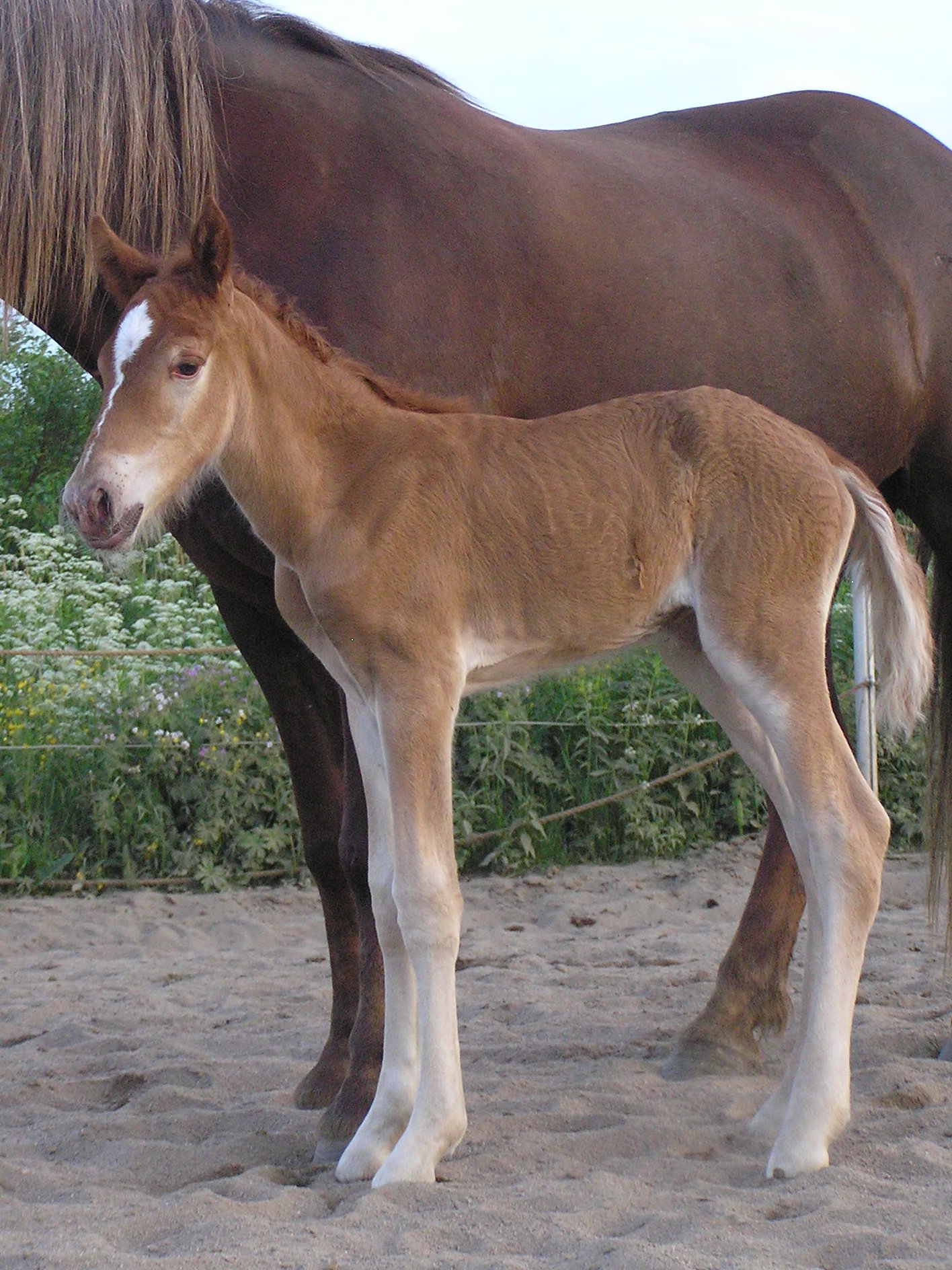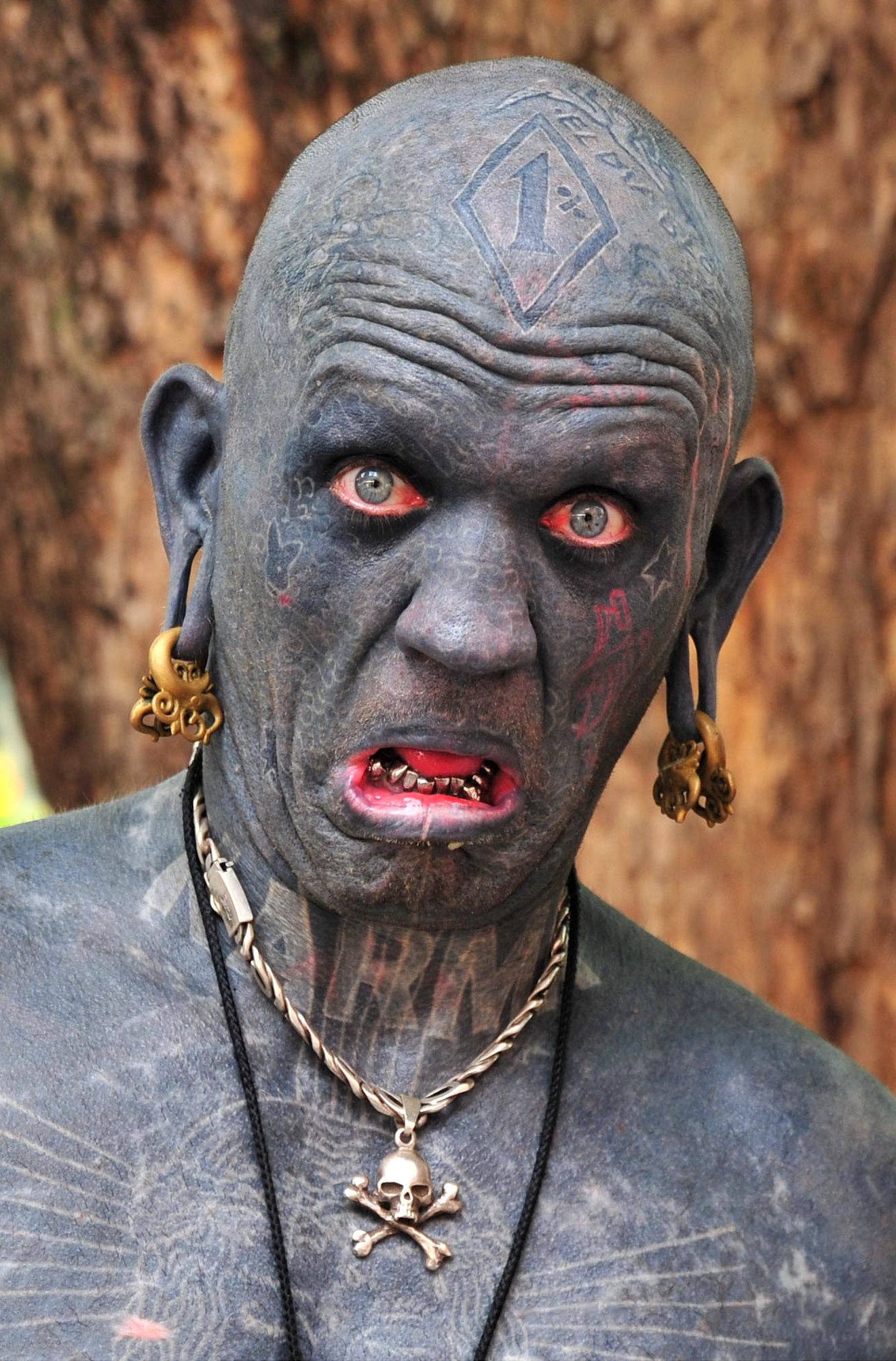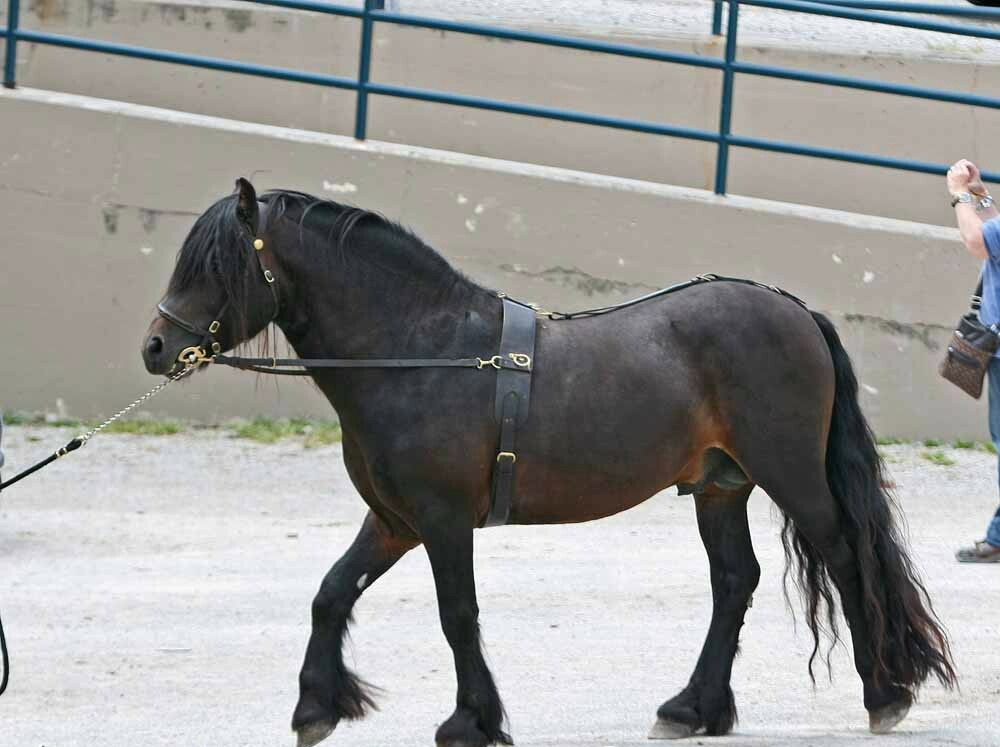|
American Belgian (horse)
The American Belgian Draft is an American breed of draft horse. It derives from the draft horses of Belgium but, as a result of isolation and different selective breeding, became genetically distinct from them in the early part of the twentieth century. It is generally taller and less heavily built, and has a very different distribution of coat colors. History The American Belgian derives from heavy draft horses of Ardennais, Brabant and Flemish stock imported from Belgium in the latter part of the nineteenth century and in the early years of the twentieth. A breed association, the American Association of Importers and Breeders of Belgian Draft Horses, was founded in 1887 in Wabash, Indiana. Imports ceased during the First World War, resumed in the 1930s, and ceased again when the Second World War broke out; Erwin F. Dygert of Iowa bought a horse from the last shipment made from Europe as the war was beginning. From the 1920s the American Belgian was bred to be somewhat ta ... [...More Info...] [...Related Items...] OR: [Wikipedia] [Google] [Baidu] |
Chestnut (horse Color)
Chestnut is a hair coat color of horses consisting of a reddish-to-brown coat with a mane and tail the same or lighter in color than the coat. Chestnut is characterized by the absolute absence of true black hairs. It is one of the most common horse coat colors, seen in almost every breed of horse. Chestnut is a very common coat color but the wide range of shades can cause confusion. The lightest chestnuts may be mistaken for palominos, while the darkest shades can be so dark they appear black. Chestnuts have dark brown eyes and black skin, and typically are some shade of red or reddish brown. The mane, tail, and legs may be lighter or darker than the body coat, but unlike the bay they are never truly black. Like any other color of horse, chestnuts may have pink skin with white hair where there are white markings, and if such white markings include one or both eyes, the eyes may be blue. Chestnut foals may be born with pinkish skin, which darkens shortly afterwards. Chestnu ... [...More Info...] [...Related Items...] OR: [Wikipedia] [Google] [Baidu] |
Breed Association
Breed clubs are associations or clubs with activities centered on a single, specific breed of a particular species of domesticated animal. The purpose of the association will vary with the species of animal and the goals and needs of the members of the association. Breed associations or clubs may vary in their goals, activities and nomenclature from country to country, even for the same breed. Most domesticated animals, whether they are agricultural animals such as cattle, llamas, poultry, sheep and pigs, or companion animals such as pigeons, horses, cats and dogs, have breed clubs associated with the breed. Purpose In general, breed clubs and associations create a written definition of the breed (called a breed standard) for the breed with which the organization is associated. Breed clubs also maintain important records, and provide members with information. Many breed associations also have a social component, organising various activities such as shows. In addition, they may ... [...More Info...] [...Related Items...] OR: [Wikipedia] [Google] [Baidu] |
Flaxen Gene
Flaxen is a genetic trait in which the mane (horse), mane and tail (horse), tail of chestnut (coat), chestnut-colored horses are noticeably lighter than the body coat color, often a golden blonde shade. Manes and tails can also be a mixture of darker and lighter hairs. Certain horse breeds such as the Haflinger carry flaxen chestnut coloration as a breed trait. It is seen in chestnut-colored animals of other horse breeds that may not be exclusively chestnut. The degree of expression of the trait is highly variable, with some chestnuts being only slightly flaxen while others are more so. Flaxen was once thought to be produced by a recessive allele, based on preliminary studies, proposed as ''Ff'' for ''flaxen''. However, more recently it is thought that it may actually be polygenic, influenced by multiple genes. Some chestnut horses that do not exhibit much flaxen may nonetheless produce strongly flaxen offspring. Studies on Morgan horses have indicated that the flaxen trait i ... [...More Info...] [...Related Items...] OR: [Wikipedia] [Google] [Baidu] |
Chestnut (coat)
Chestnut is a hair coat color of horses consisting of a reddish-to-brown coat with a mane and tail the same or lighter in color than the coat. Chestnut is characterized by the absolute absence of true black hairs. It is one of the most common horse coat colors, seen in almost every breed of horse. Chestnut is a very common coat color but the wide range of shades can cause confusion. The lightest chestnuts may be mistaken for palominos, while the darkest shades can be so dark they appear black. Chestnuts have dark brown eyes and black skin, and typically are some shade of red or reddish brown. The mane, tail, and legs may be lighter or darker than the body coat, but unlike the bay they are never truly black. Like any other color of horse, chestnuts may have pink skin with white hair where there are white markings, and if such white markings include one or both eyes, the eyes may be blue. Chestnut foals may be born with pinkish skin, which darkens shortly afterwards. Chest ... [...More Info...] [...Related Items...] OR: [Wikipedia] [Google] [Baidu] |
Guinness World Records
''Guinness World Records'', known from its inception in 1955 until 1999 as ''The Guinness Book of Records'' and in previous United States editions as ''The Guinness Book of World Records'', is a British reference book published annually, listing world records both of human achievements and the extremes of the natural world. Sir Hugh Beaver created the concept, and twin brothers Norris and Ross McWhirter co-founded the book in London in August 1955. The first edition topped the bestseller list in the United Kingdom by Christmas 1955. The following year the book was launched internationally, and as of the 2025 edition, it is now in its 70th year of publication, published in 100 countries and 40 languages, and maintains over 53,000 records in its database. The international franchise has extended beyond print to include television series and museums. The popularity of the franchise has resulted in ''Guinness World Records'' becoming the primary international source for cata ... [...More Info...] [...Related Items...] OR: [Wikipedia] [Google] [Baidu] |
Gelding
A gelding (Help:IPA/English, /ˈɡɛldɪŋ/) is a castration, castrated male horse or other equine, such as a pony, donkey or a mule. The term is also used with certain other animals and livestock, such as domesticated Camelidae, camels. By comparison, the equivalent term for castrated male cattle would be List of cattle terminology , ''steer'' (or ''bullock''), and Wether (other), ''wether'' for sheep and goats. Castration allows a male animal to be more calm, better-behaved, less sexually aggressive, and more responsive to training efforts. This makes the animal generally more suitable as an everyday working animal, or as a pet in the case of companion animals. The gerund and participle "gelding" and the infinitive "to geld" refer to the castration procedure itself. Etymology The verb "to geld" comes from the Old Norse language, Old Norse , from the adjective . The noun "gelding" is from the Old Norse . History The Scythians are thought to have been among the first t ... [...More Info...] [...Related Items...] OR: [Wikipedia] [Google] [Baidu] |
Big Jake (horse)
Big Jake (March 2001 – June 2021) was an exceptionally tall American Belgian gelding horse. From 2010 he was the Guinness World Records "tallest living horse", and also the second-tallest horse on record. Life Big Jake was born in 2001 in Nebraska, weighing approximately , which is about heavier than is typical for his breed. His parents were normal-sized, and he was not unusually tall as a foal. He was bought as a three-year-old by the Gilbert family of Smokey Hollow Farm, near Poynette, Wisconsin. He ate two buckets of grain and about a bale of hay every day. His stall was almost twice the normal size and he was transported in a semi-trailer. He became the Guinness World Records "tallest living horse" when he was measured in 2010 at . He also became the second-tallest horse on record, after Sampson at (foaled 1846, in Toddington Mills, Bedfordshire, England). He competed in draft horse showing competitions and was shown at the Wisconsin State Fair The Wiscons ... [...More Info...] [...Related Items...] OR: [Wikipedia] [Google] [Baidu] |
Brooklyn Supreme
Brooklyn "Brookie" Supreme (April 12, 1928 – September 6, 1948) was a red roan Belgian stallion noted for his extreme size. Although disputed, the horse may be the world record holder for largest (but not tallest) horse and was for a while designated the world's heaviest horse before Sampson was found to have been heavier. He stood 19.2 hands () tall and weighed with a girth of . Each of his horseshoes required of iron. The horse was foaled on the Brooklyn Center, Minnesota farm of Earle Brown, who first exhibited him. Before becoming oversized, the stallion "had been Grand Champion of his breed in many state fairs". One of his great-grandfathers was another famous horse, Farceur 7332. For much of his fame, Brooklyn Supreme was owned by Charles Grant Good of Ogden, Iowa; Ralph M. Fogleman of Callender, Iowa partnered with Good and exhibited the horse around the US, charging spectators 10 cents to view the animal. See also * List of historical horses This list includ ... [...More Info...] [...Related Items...] OR: [Wikipedia] [Google] [Baidu] |
Stallion
A stallion is an adult male horse that has not been gelded ( castrated). Stallions follow the conformation and phenotype of their breed, but within that standard, the presence of hormones such as testosterone may give stallions a thicker, "cresty" neck, as well as a somewhat more muscular physique as compared to female horses, known as ''mares'', and castrated males, called ''geldings''. Temperament varies widely based on genetics and training, but because of their instincts as herd animals, they may be prone to aggressive behavior, particularly toward other stallions, and thus require careful management by knowledgeable handlers. With proper training and management, stallions are effective equine athletes at the highest levels of many disciplines, including horse racing, horse shows, and international Olympic competition. "Stallion" is also used to refer to males of other equids, including zebras and donkeys. Herd behavior Young female horses usually leave their band ... [...More Info...] [...Related Items...] OR: [Wikipedia] [Google] [Baidu] |
Brooklyn Supreme (horse)
Brooklyn "Brookie" Supreme (April 12, 1928 – September 6, 1948) was a roan (horse), red roan American Belgian Draft, Belgian stallion noted for his extreme size. Although disputed, the horse may be the world record holder for largest (but not tallest) horse and was for a while designated the world's heaviest horse before Sampson (horse), Sampson was found to have been heavier. He stood 19.2 Hand (unit), hands () tall and weighed with a girth of . Each of his horseshoes required of iron. The horse was foaled on the Brooklyn Center, Minnesota farm of Earle Brown, who first exhibited him. Before becoming oversized, the stallion "had been Grand Champion of his breed in many state fairs". One of his great-grandfathers was another famous horse, Farceur 7332. For much of his fame, Brooklyn Supreme was owned by Charles Grant Good of Ogden, Iowa, Ogden, Iowa; Ralph M. Fogleman of Callender, Iowa partnered with Good and exhibited the horse around the US, charging spectators 10 cents to ... [...More Info...] [...Related Items...] OR: [Wikipedia] [Google] [Baidu] |
Mechanization Of Agriculture
Mechanised agriculture or agricultural mechanization is the use of machinery and equipment, ranging from simple and basic hand tools to more sophisticated, motorized equipment and machinery, to perform agricultural operations. In modern times, powered machinery has replaced many farm task formerly carried out by manual labour or by working animals such as oxen, horses and mules. The entire history of agriculture contains many examples of the use of tools, such as the hoe and the plough. The ongoing integration of machines since the Industrial Revolution has allowed farming to become much less labour-intensive. Agricultural mechanization is part of this technological evolution of agricultural automation. It can be summarized as a progressive move from manual tools to animal traction, to motorized mechanization, to digital equipment and finally, to robotics with artificial intelligence (AI). These advances can raise productivity and allow for more careful crop, livestock, aquacul ... [...More Info...] [...Related Items...] OR: [Wikipedia] [Google] [Baidu] |
Erwin F
Erwin may refer to: People Given name * Erwin Chargaff (1905–2002), Austrian biochemist * Erwin Chemerinsky (born 1953), American legal scholar * Erwin Dold (1919–2012), German concentration camp commandant in World War 2 * Erwin Hauer (1926–2017), Austrian-born American sculptor * Egon Erwin Kisch (1885–1948), Czechoslovak writer and journalist * Erwin Emata (born 1973), Filipino mountain climber * Erwin James (born 1957), British writer and journalist * Erwin Josi (born 1955), Swiss alpine skier * Erwin Klein (died 1992), American table tennis player * Erwin Koeman (born 1961), Dutch footballer and coach * Erwin Kramer (1902–1979), East German politician * Erwin Kreyszig (1922–2008), American academic * Erwin Neutzsky-Wulff (born 1949), Danish author and philosopher * Erwin Osen (1891–1970), Austrian painter and mime artist * Erwin Panofsky (1892-1968), German-Jewish art historian * Erwin Ramírez (born 1971), Ecuadorian football player * Erwin Rommel (1891–1944), ... [...More Info...] [...Related Items...] OR: [Wikipedia] [Google] [Baidu] |




